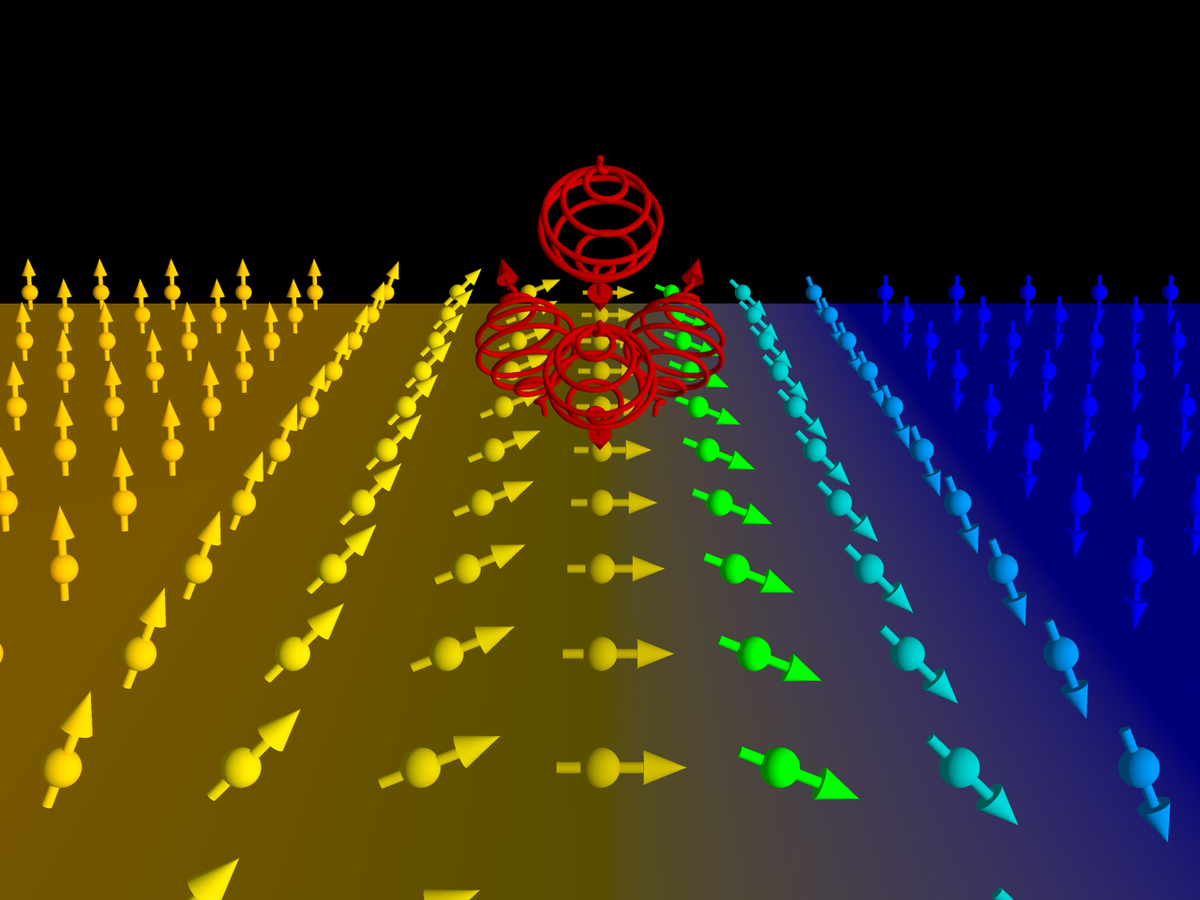Ultrafast dynamics of chiral spin structures after optical excitation
23 December 2020
A joint research project of the Johannes Gutenberg University Mainz (JGU), the University of Siegen, Forschungszentrum Jülich and the Elettra Synchrotron has achieved a new milestone for the ultra-fast control of magnetism. An international team is working on magnetization configurations that exhibit chiral twisting. Chiral symmetry breaking in nature underlies molecules essential for life with a fixed chirality, for instance. Magnetization configurations with a fixed chirality are intensively investigated due to their fascinating properties, such as enhanced stability and efficient manipulation by currents. Thus these magnetic textures offer useful applications in the field of ultrafast chiral spintronics, e.g. the ultrafast writing and control of chiral topological magnetic objects such as magnetic skyrmions, special twisted magnetization configurations with exciting properties.
The new insights published in Nature Communications shed light on the ultrafast dynamics after optical excitation of chiral spin structures compared to collinear spin structures. According to the researchers' findings, the chiral order is restored more rapidly compared to the collinear order after excitation by an infrared laser.

At the free electron laser (FEL) facility FERMI in Trieste, Italy, the team performed small angle X-ray scattering experiments on magnetic thin film samples that stabilize chiral magnetic configurations. The facility provides the unique possibility to study the magnetization dynamics via an infrared pump – an X-ray probe experiment with femtosecond time-resolution by using circular left/right polarized light. The time-dependence of the scattering intensity reveals a recovery time three times faster than normal, constant of the difference signal (CL-CR) compared to the sum signal (CL+CR).
Researchers from the Topological Nanoelectronics Group of the Jülich Peter Grünberg Institute – Quantum Theory of Materials (PGI-1) provided theoretical support which helped to uncover the fingerprints and the time-scale of chiral dynamics — the so-called dechiralization process — from experimental measurements of the difference and sum signals.
These results indicate a faster recovery of chiral order compared to collinear, i.e. twists are more stable than straight magnetic configurations. The findings provide the next step in utilizing chiral magnetization configurations in novel spintronic devices.
Original publication:
Kerber, N., Ksenzov, D., Freimuth, F. et al.
Faster chiral versus collinear magnetic order recovery after optical excitation revealed by femtosecond XUV scattering.
Nat Commun
11,
6304 (2020). https://doi.org/10.1038/s41467-020-19613-z
Further information:
Press release “
Neue Forschungsergebnisse im Bereich chiraler magnetischer Ordnungen auf der Nanoskala
“ published on 9 December 2020 by the University of Siegen.